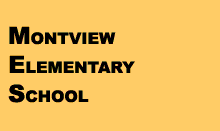 "We can articulate why we're doing what we're doing." As the student population at Montview shifted from suburban to urban, as the number of English language learners skyrocketed, and as the transiency rate topped 100%, the staff made a choice – to focus on how children learn, to equip themselves with research-based teaching strategies, and to embed professional development in the day-to-day life of the school. Some teachers transferred out when the demands became clear, but others transferred in. "In the years before I came to Montview, I was a so-so teacher, but it was important for me to continually develop. I made a choice to come here because of the professional development, and I've never felt so supported." Rather than perseverate on their students as "at-risk" learners, the staff decided to clarify their beliefs about learning, and then apply them. They began by choosing an established staff development program, the Literacy Learning Network, to implement schoolwide. The structure set up five years ago to support that implementation is still in place. Title I funds are used to release selected staff members from classroom duties so that they can function as coaches, or "teacher leaders," for other staff. Each leader has a group of teachers he or she observes once a week. The leader then meets individually with each one to discuss the observation and to help the teacher update or make adjustments to his or her personal action plan. In addition to the concrete, classroom-specific learning promoted through these coaching relationships, nearly all the staff attend Wednesday "dialogue" sessions to bring research resources and professional articles to bear on schoolwide learning issues. Teachers earn district credit for attending these voluntary after-school sessions, participate in preparing the agendas, and facilitate the dialogue. According to teachers, this model works because they think of themselves as learners in the same way they think about their students as learners – as being on a continuum, always ready to take the next step. They are all expected to generate questions about what they are doing, what they are learning, and what they would like to try or find out. "My action plans," explains a third-year teacher, "began the first year looking at the literacy model, since I was not familiar with it. Then my coach would suggest things and I was able to deepen those understandings. Now, this year, I am directed by my own questions, things I wonder about from talking with other staff members or my grade level." Relatively new teachers aren't the only ones who thrive in this atmosphere. As a veteran teacher points out, "Because each of us works on an individualized action plan, which is very relevant and very real, it is hard to get burned out. You are always being challenged by some kind of new learning. It would be hard to get stuck in a rut." Principal Debbie Backus would agree that she, too, is learning a lot. "The heart of all we're doing here," she says, "is developing theories to support our practice." One way Backus builds her professional understanding is through the Wednesday dialogue sessions. As one teacher observes, "I really respect the fact that she comes to our dialogues. She's so professional we want to attend." Adds another teacher, "She understands what an instructional leader does. She is a learner just like every single teacher. She works on action plans. She had to learn herself how kids learn. She is always working on something new." "Originally," Backus reports, "professional development came from the teacher evaluation process, but when we started letting student assessment drive instruction, using data about our kids, it changed our professional development orientation to understanding the learner, to really understanding what do you know about the student. "Our professional development is job-embedded, focused on real problems and real issues, with teachers feeling they have strategies, ways to deal with why a kid is learning or not learning. Talk in this school is professional. We can articulate why we're doing what we're doing." What Montview staff are doing has paid off for students in both reading and math. Students' scores on standardized tests moved from below the district average to the top of the district range. In addition, teachers have been able to virtually eliminate ethnic performance gaps. But as one teacher describes success, "I'm successful when I open the door and 99 percent of the kids show up, even when the weather is crummy, even when they don't feel well, because they want to be there." |
Grades K-5 Number of Students 860 Student Ethnicity 46% Latino 27% African American 21% White 5% Asian 1% Native American English Language Learners 42% Free/Reduced Lunch 77% Special Needs 13% Student Transiency 126% Measures of Success increased reading and virtually eliminated selected as Literacy
2055 Moline Street Aurora, CO 80010 303-364-8549
|
WestEd
WestEd Home | Search | Feedback
About WestEd | Our Work | Resources | What's New
This information can be found at
http://
Last modified
©
WestEd® | (415) 565-3000 | www.WestEd.org